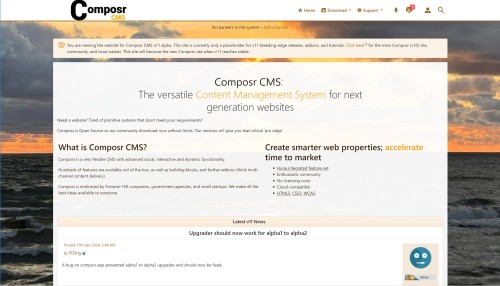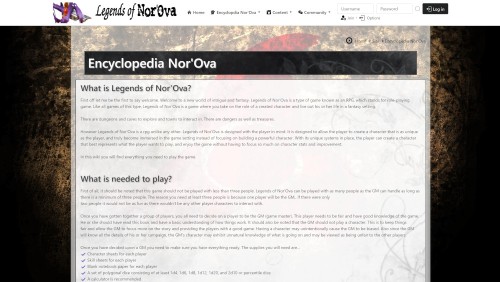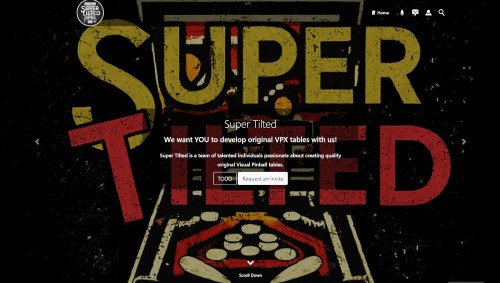Featured Sites: A-Z Index
H
Newest 10 Entries
| Question | How can I contribute to translating Composr? |
|---|---|
| Answer | You can contribute to Composr's internationalization by:
|
| Question | What is Transifex, and how does it help with translation? |
|---|---|
| Answer | Transifex is a collaborative online platform used by the Composr community for translation. Its benefits include:
|
| Question | Can I translate images with text on them? |
|---|---|
| Answer | Yes, you can translate images containing text. In the themes/default/images/ directory, you'll find an EN folder containing images with English text.
|
| Question | How do I translate the content on my Composr website? |
|---|---|
| Answer | Once you've installed a new language pack, you can translate existing content by:
|
| Question | How do I change the language of my Composr website? |
|---|---|
| Answer | Composr comes with English as the default language. To change to a different language:
You can test a language without changing settings by appending &keep_lang=XX to the URL, where XX is the language code (e.g., FR for French). |
| Question | What should I do after successfully importing data into Composr? |
|---|---|
| Answer | After importing, if all files like avatars, photos, and attachments have been copied to Composr's directories, you can remove the imported product's directory. However, it's advisable to keep the directory, database, and import session for a few weeks in case any data was not correctly imported and needs further attention. Importing is a complex process, so keeping backups and sources for a while is a good practice. |
| Question | Where can I get help with the import process? |
|---|---|
| Answer | The Composr documentation provides extensive information. Additionally, you can seek assistance from experienced Composr developers, including the Composr team if your project allows for professional support. |
| Question | Can I switch from a third-party forum to Conversr (Composr's built-in forum)? |
|---|---|
| Answer | Yes, if an importer exists for your current forum software, you can switch to Conversr during the import process. Composr will handle the forum driver switch and remap user IDs, but it's recommended to double-check permissions afterward. |
| Question | How does the HTML website importer work? |
|---|---|
| Answer | The HTML website importer is an advanced tool for migrating static HTML websites to Composr. It analyzes the HTML structure to create zones, Comcode pages, and a basic template. It also attempts to fix links and file paths for Composr compatibility. |
| Question | What is a Composr import session? |
|---|---|
| Answer | Import sessions track the progress and ID remapping for each import, allowing you to merge multiple sites or resume interrupted imports. This is particularly useful when merging multiple Composr sites into one. |
Top 10 Entries
| Question | Where are download galleries located, and can I move them? |
|---|---|
| Answer | By default, download galleries (to contain screenshots of a download) are placed under the root gallery. You can move them to a different gallery for better organization. Here's how:
|
| Question | Can I sell downloads on my Composr site? |
|---|---|
| Answer | Yes, the download system integrates with the points system, allowing you to charge for downloads. This is particularly useful for communities where members create and share content, like game modifications. You can set prices for downloads and creators earn points when users purchase them. Additionally, you can create a subscription-based system by requiring points for downloads, which users can purchase via methods like PayPal. |
| Question | What does it mean to "outmode" a download? |
|---|---|
| Answer | Outmoding means marking a download as superseded or replaced by a newer version. When editing the older download, you link it to the new one in the "outmode" field. This makes it clear to users that there is a newer version available. This is handy especially if you provide software. |
| Question | What are the different ways to add downloads to my Composr site? |
|---|---|
| Answer | Composr offers several methods for adding files to the download system:
|
| Question | What is the Composr Setup Wizard and what does it do? |
|---|---|
| Answer | The Setup Wizard is a guided process to help you configure essential settings for your Composr website after installation. It can:
While convenient, be aware that re-running the Setup Wizard may overwrite existing settings and customizations if you already configured your site. |
| Question | How can I change the structure of my Composr website's pages? |
|---|---|
| Answer | You can delete and move pages using the Admin Zone > Structure > Sitemap editor. However, moving pages between zones might invalidate existing page-links unless specified using the _SEARCH zone in the link. To avoid issues with existing links and search engine indexing, consider setting up redirects when moving pages. This can be done through Admin Zone > Structure > Redirects. It is recommended not to move default Composr pages as it can complicate future upgrades. |
| Question | What are Installation Options and how can I change them? |
|---|---|
| Answer | Installation Options are low-level settings for Composr, such as database details and default language. You can access the Installation Options editor through:
Remember that you'll need your maintenance password, specified during installation, to access and modify these options. |
| Question | How do I open or close my Composr website to the public? |
|---|---|
| Answer | By default, your Composr site is closed after installation. To open it to the public (or to close an opened site), go to Admin Zone > Setup > Configuration > Site options > Closed site and adjust the setting accordingly. You can also configure a closed site message. While a closed site prevents public access, it's worth noting that users can still join a closed Conversr-powered site if they have access to the join module URL. However, they won't be able to log in unless they're assigned to a usergroup with "Access closed site" permissions. You can modify the join module's permissions to restrict access further. |
| Question | What is the .htaccess file and how does it relate to Composr? |
|---|---|
| Answer | The .htaccess file is a configuration file for the Apache web server. It allows you to define settings that apply to the directory where it's located and its subdirectories. Composr can leverage .htaccess to enhance security and enable features like "URL Schemes." You can try renaming the provided recommended.htaccess file to .htaccess. This file includes recommended options that tighten security and ensure Composr has necessary PHP and Apache features activated. Note that some web hosts might restrict the use of .htaccess files. You should regularly review recommended.htaccess for changes between Composr updates. |
| Question | How do Composr permissions work? |
|---|---|
| Answer | Composr employs a multi-layered permission system with two main types: privileges and access permissions. The system grants users the best possible access based on the combination of their usergroups. Privileges define broad permissions, such as accessing a closed site or content manipulation abilities based on impact level (low, medium, high). You can set privileges for usergroups via checkboxes, with the option to override them for specific pages or categories. Go to Admin Zone > Security > Global privileges. Access permissions control what content users can view. These permissions are layered:
To configure access permissions, you can edit the specific resource or utilize the Permissions Tree Editor under Admin Zone > Security > Permissions Tree Editor. |







